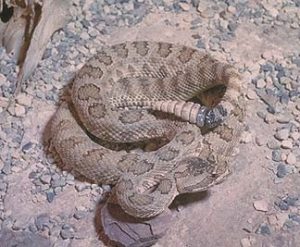
Many Utahns head outdoors to hike and go on bike rides during the summer. While rattlesnake attacks aren’t particularly common in Utah, they still remain a very serious threat for outdoor adventurers.
The Poison Control Center was called 21 times for snake bites in 2014, though only 11 of them were identified as actual rattler bites.
Forest Service public affairs specialist KJ Pollock said while snakes aren’t necessarily common, they still pose a threat.
“While there haven’t been many incidences of rattlesnake bites, there have been a lot of sightings from the hiking trails in the Wasatch front, stretching from Logan to Lehi. They aren’t nearly as popular here as they are in New Mexico or Arizona, but they’re still something to keep an eye out for,” Pollock said.
Because rattlesnakes are often hard to detect, having full awareness of the trail is key to avoiding them. Pollock said that some of their common hiding spots are near rocks.
“Snakes have the habit of shading up in certain trails,” Pollock said. “Because of that, people should be very careful when it comes to rocks. Whether it’s sitting on a rock or moving them along or just resting your hand on a rock, you need to be cautious of what you’re doing because a rattlesnake could be right there.”
Pollock added this is especially true of rolling rocks because “you never know if a snake was under it from the get-go.”
Hikers shouldn’t just be aware of the trail; they also need to be aware of the snakes themselves.
More often than not, snakes aren’t interested in bothering a person. However, the presence of a human — regardless of intent — is often intimidating and can cause the snake to strike out of fear. According to Utah Division of Wildlife Resources Native Aquatic Species Program Coordinator Krissy Wilson, there are ways to manage a situation like this.
It is recommended to keep five feet away from a snake and slowly back away from it. While it may be a natural response to jump or run, slow and steady movements are less jarring to the snake. Once out of harm’s way, alert others on the trail.
“I can’t overemphasize how important it is to give snakes space, to watch where you step, to watch where you place your hands when you sit down and, above all, to resist the urge to harass or kill a snake,” Wilson said.
Harming or killing a rattlesnake is against the law in Utah.
A common belief is that rattlesnakes will always rattle their tails before they strike, but this is a misconception.
“If they feel endangered they usually rattle, but just because they don’t (rattle) doesn’t mean they aren’t scared,” Pollock said. “So hikers shouldn’t wait for a rattle to try to keep their distance.”
Hikers should also wear boots, because the thicker material may prevent a bite from hitting or breaking the skin.
Hiking is a great way to enjoy the beautiful scenery that Utah has to offer, but with it being rattlesnake season, everyone should take proper precautions to stay safe.




